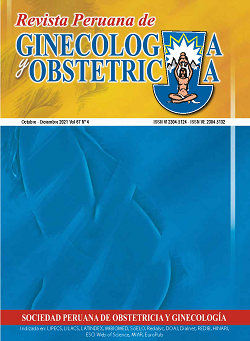Comparison between endometrial hyperplasia classifications. Systematic review and quality assessment
DOI:
https://doi.org/10.31403/rpgo.v67i2360Keywords:
Endometrial hyperplasia, Pathology, Classification, World Health OrganizationAbstract
Background: Endometrial hyperplasia is currently classified into non-atypic or benign hyperplasia and precancerous lesion, atypical hyperplasia/endometrioid intraepithelial neoplasia or EIN, according to two systems, the World Health Organization (WHO) which modified its previous classifications in 2014 -although the 1994 classification is still widely used- and the endometrial intraepithelial neoplasia (EIN) system. It is still unclear which classification system for endometrial hyperplasia should be used for patient management and treatment. Objective: To review and evaluate meta-analyses comparing the World Health Organization classification systems for endometrial hyperplasia and the EIN system. Methods: Systematic review of meta-analysis studies using the search terms “endometrial hyperplasia” in PubMed, Embase and Lilacs databases. The meta-analyses finally selected were scored using the AMSTAR 2 assessment tool. Results: The search found 154 articles of which, after selection and complete reading, three were finally extracted for qualitative analysis. The rating of the meta-analyses reviewed with the AMSTAR 2 assessment tool found that the overall confidence of their results was critically low. Conclusions: The data show that objective morphometry in the EIN system is more reliable than the WHO criteria for assessing the risk of progression of endometrial hyperplasia to cancer. Comparison between the WHO system and the subjective EIN system resulted in similar prognostic values. Another meta-analysis showed a clear discrepancy between the 1994 WHO system and the EIN system. Evaluation using the AMSTAR-2 assessment tool showed that the overall confidence in the results of the evaluated studies was critically low.
Downloads
Downloads
Published
How to Cite
Issue
Section
License
Copyright (c) 2021 Mario Arturo González Mariño

This work is licensed under a Creative Commons Attribution 4.0 International License.
Esta revista provee acceso libre inmediato a su contenido bajo el principio de que hacer disponible gratuitamente la investigación al publico, lo cual fomenta un mayor intercambio de conocimiento global.















